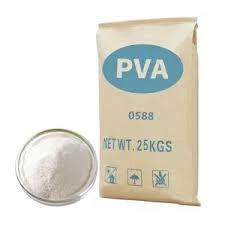The Role of HPMC in the Construction Chemical Industry
Hydroxypropyl methylcellulose (HPMC) is a versatile and essential product widely utilized in the construction chemical industry. Renowned for its unique properties, HPMC is a non-ionic, water-soluble polymer derived from cellulose. Its compatibility with various building materials has rendered it one of the most sought-after additives in the formulation of construction chemicals, such as cementitious products, tile adhesives, and various other construction composites.
Properties of HPMC
HPMC exhibits several key properties that contribute to its effectiveness in construction applications. Its primary advantages include excellent water retention, improved workability, and enhanced adhesion. Water retention properties ensure that the applied materials remain workable for an extended period, allowing for better manipulation and placement without compromising the integrity of the mix. This is especially crucial in environments with high temperatures or wind, where rapid drying could negatively impact the performance of materials.
Another significant attribute of HPMC is its ability to improve the consistency and stability of construction mixtures. By acting as a thickening agent, it helps maintain a uniform viscosity, making it suitable for use in various formulations. This attribute is particularly beneficial when creating tile adhesives or plaster, where a consistent application is vital for achieving optimal results.
Applications of HPMC in Construction
HPMC finds widespread application in numerous construction-related products. One of its most prominent uses is in tile adhesives, where it enhances bonding strength and improves the open time of the adhesive. An extended open time allows installers to adjust tiles without the adhesive setting too quickly, leading to better alignment and fewer installation errors. Furthermore, the improved adhesion properties offered by HPMC contribute to the longevity and durability of the tile installation.
construction chemical hpmc

In cementitious applications, HPMC helps improve the workability of mortars, rendering them easier to spread and finish. It is also instrumental in reducing the phenomenon of sagging in vertical applications, ensuring that thicker layers remain intact without slipping off. This quality is particularly beneficial in preparing renders and plasters, where adherence to uneven surfaces is essential.
Another vital area of application includes the formulation of self-leveling compounds, where HPMC aids in eliminating air bubbles and ensuring a smooth surface upon curing. This is crucial for flooring solutions, where a level surface is necessary for aesthetics and performance. HPMC’s water-retaining properties ensure that the compound remains workable during application, facilitating a hassle-free installation process.
Environmental and Safety Considerations
As the construction industry moves towards more sustainable and environmentally friendly practices, HPMC presents an attractive solution. It is derived from natural cellulose, making it a renewable resource. Additionally, it is free from solvents and volatile organic compounds (VOCs), which are common concerns in many construction chemicals. This characteristic not only enhances indoor air quality but also aligns with the growing demand for eco-friendly building solutions.
Safety is also a critical consideration in the use of construction chemicals. HPMC is regarded as safe for use, with minimal health risks when applied correctly in building materials. This aspect is particularly appealing for construction workers and homeowners alike, as it helps promote a safer working environment.
Conclusion
In summary, Hydroxypropyl methylcellulose serves as a critical component in modern construction chemistry, contributing to the efficacy and safety of various building materials. Its exceptional properties—spanning water retention, improved workability, and enhanced adhesion—make HPMC indispensable in applications such as tile adhesives, mortars, and self-leveling compounds. As the construction industry continues to evolve, embracing sustainable practices and materials, HPMC is likely to remain at the forefront, fostering innovations that not only improve construction methodologies but also align with environmental stewardship. The growing reliance on such cellulose derivatives illustrates a promising future for the construction chemical industry, emphasizing the importance of research and development in enhancing material performance while considering environmental impact.
-
Rdp Powder: Key Considerations for Wholesalers in the Building Materials IndustryNewsJul.08,2025
-
Key Considerations for Wholesalers: Navigating the World of Hpmc - Based ProductsNewsJul.08,2025
-
Hpmc Detergent: Key Considerations for WholesalersNewsJul.08,2025
-
Key Considerations for Wholesalers: China Hpmc For Tile Adhesive, Coating Additives, Concrete Additives, and MoreNewsJul.08,2025
-
Crucial Considerations for Wholesalers: Navigating the World of Construction MaterialsNewsJul.08,2025
-
Key Considerations for Wholesalers Sourcing Additive For Cement, Additive For Concrete, Additive For Putty from Additive Manufacturer Shijiazhuang Gaocheng District Yongfeng Cellulose Co., Ltd.NewsJul.08,2025




